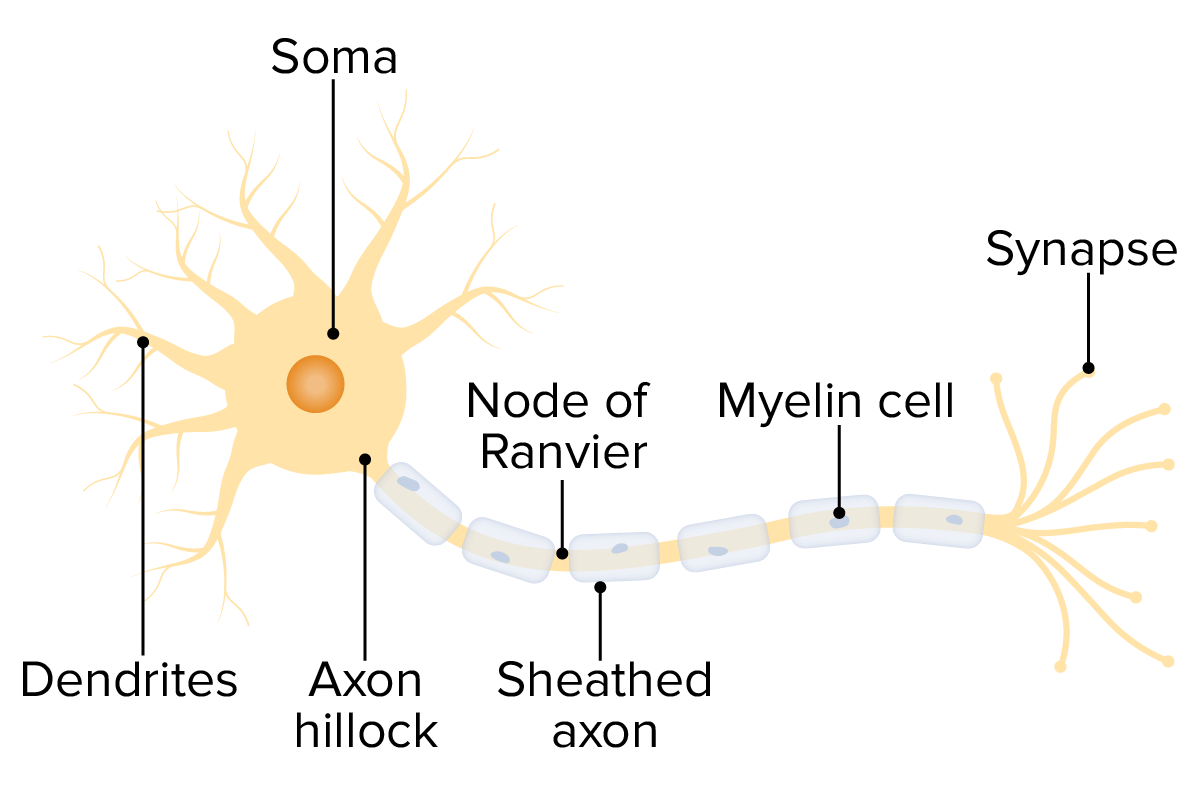Playlist
Show Playlist
Hide Playlist
CIDP: Presentation, Diagnosis, and Treatments
-
Slides Chronic Inflammatory Demyelinating Polyneuropathy.pdf
-
Download Lecture Overview
00:02 When we think about reflexes we want to differentiate distal areflexia from diffuse areflexia. 00:07 Distal areflexia which is reduced ankle jerks with intact or preserved knee jerk reflexes indicates a distal symmetric polyneuropathy like diabetes. 00:17 And this is common in the length-dependent polyneuropathies. 00:20 That's different from diffuse areflexia, which indicates proximal involvement of the nerves. 00:26 It suggests a polyradiculopathy, which we see with AIDP/CIDP, West Nile, Lyme and other associated conditions. 00:35 So let's talk about the typical clinical presentation of CIDP. 00:38 The typical pattern is symmetric. There is sensory involvement. 00:42 There's both a distal and proximal involvement of weakness. 00:46 Patients have early areflexia. 00:48 The disease course is progressing but it can relapse over time. 00:52 Cerebral spinal fluid protein is elevated. 00:54 This is an inflammatory process. 00:56 And we see that increased protein pointing us to inflammation. 01:00 We rarely see anti-ganglioside antibodies like we do see in Guillain Barre. 01:04 It can respond to IVIg. 01:06 But we also see a response to corticosteroids, which we don't tend to see as robustly in Guillain Barre. 01:13 CIDP and the chronic inflammatory polyneuropathies are an important group of neuromuscular disorders that present chronically and progressive for more than eight weeks. 01:23 And there are a few key features that we want to take home about these. 01:27 Their chronic and progressive often with stepwise progression of weakness over time. 01:32 When treated symptoms can improve but we can see relapses as a result of flares or exacerbations of the immune system. 01:39 Weakness is typically symmetric and characterized by proximal and distal muscle group involvement. 01:45 We do see sensory symptoms like numbness, tingling, gait imbalance. 01:49 At time painful paraesthesia, though those are not prominent. 01:52 Preceding viral infections are less common in CIDP compared to Guillain-Barre, and the CSF evaluation is the most sensitive measure showing elevated protein in 94% of cases. 02:04 How do we manage CIDP? Well, there's been a number of studies including randomized controlled trials that have confirmed the efficacy of corticosteroids, plasma exchange and intravenous immuneglobulin. 02:15 And so we use all three of those to manage these patients. 02:18 Prednisone therapy is the mainstay of treatment. 02:21 We typically start with a high dose and taper slowly over time to calm the immune system down. 02:27 The prednisone doses slowly taper typically five milligrams every two to three weeks or so. 02:31 And so you can tell this is a prolonged to taper in these patients. 02:35 IVIg when given is given at a dose of 2gm/kilogram over two to five days, and we can consider maintenance therapy. 02:44 For patients presenting with an acute relapse, we would often consider IVIg or plasmapheresis, followed by reinitiation, or reescalation of steroids to maintain long term immunomodulation. 02:55 We treat the patients typically for six months and then reevaluate to determine if further therapy is needed. 03:01 We'd like to avoid long term corticosteroid treatment and if necessary, corticosteroid sparing agents may be considered. 03:08 And then plasmapheresis is used in patients who are severely weak or who present with a fulminant course, or experience relapses on prednisone or on IVIg and particularly if they're unresponsive to those therapies.
About the Lecture
The lecture CIDP: Presentation, Diagnosis, and Treatments by Roy Strowd, MD is from the course Chronic Inflammatory Demyelinating Polyneuropathy (CIDP).
Included Quiz Questions
Which of the following is TRUE regarding the clinical features of CIDP?
- Symptoms are symmetrical.
- Hyperreflexia is common.
- IgM anti-GM antibodies are commonly present.
- Lumbar puncture/CSF reveals > 50 white blood cells.
- Steroids are not a useful treatment.
Which of the following is the mainstay of treatment for CIDP?
- High dose of prednisone followed by a slow taper
- IVIG 5 mg/kg every other week
- Plasmapheresis before the induction of steroids
- Bone marrow transplant
- High-dose allopurinol
Customer reviews
5,0 of 5 stars
| 5 Stars |
|
5 |
| 4 Stars |
|
0 |
| 3 Stars |
|
0 |
| 2 Stars |
|
0 |
| 1 Star |
|
0 |




